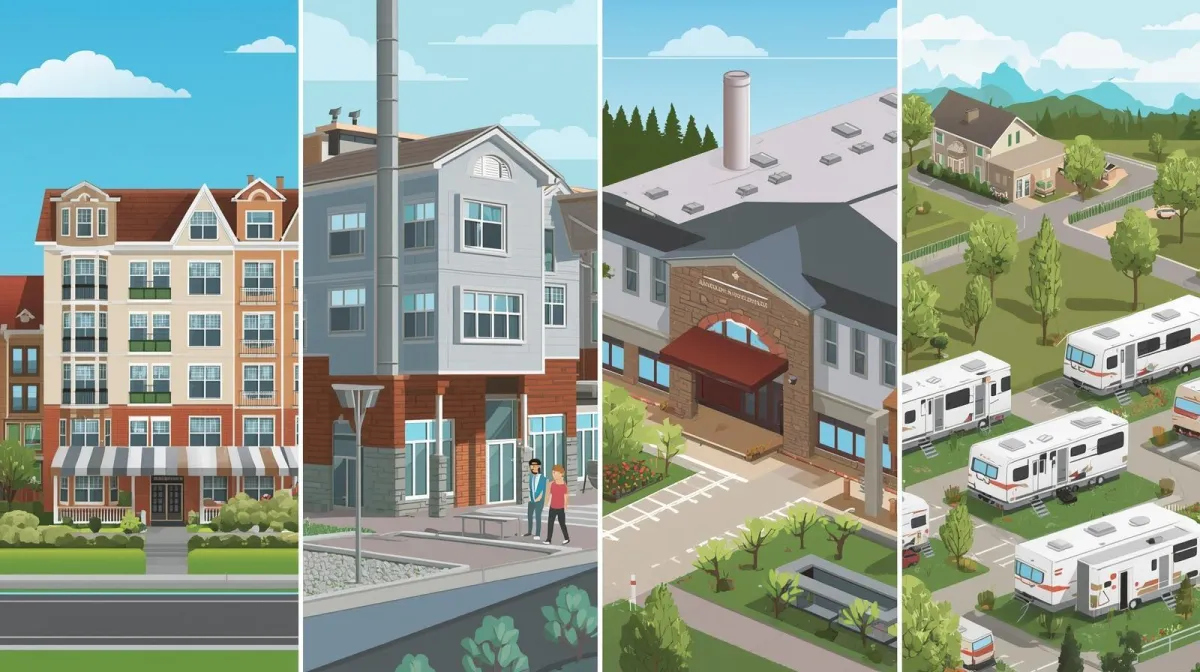
Understanding the Common Commercial Real Estate Asset Classes
Commercial real estate (CRE) offers investors a diverse set of opportunities to build wealth, generate passive income, and hedge against inflation. Within CRE, there are several asset classes, each with its own benefits and unique appeal to investors.
At Afterburner Equity, we believe that diversification across asset classes is one of the most effective ways to build a resilient portfolio through syndications. Below, we’ll explore some of the most common CRE asset classes—and why each one is attractive.
1️⃣ Multifamily Properties
Multifamily real estate, including apartment complexes and townhome communities, is one of the most popular asset classes in CRE.
Benefits:
Strong demand for affordable housing in nearly every market.
Multiple tenants help mitigate vacancy risk.
Opportunities for steady rental income and value-add improvements.
Why Attractive: With housing shortages in many regions, multifamily investments remain a reliable and recession-resistant choice.
2️⃣ Industrial Properties
Industrial real estate includes warehouses, distribution centers, and manufacturing facilities.
Benefits:
Growing demand driven by e-commerce and global supply chain shifts.
Long-term leases with creditworthy tenants.
Lower maintenance and management compared to residential assets.
Why Attractive: The rise of online shopping and logistics networks means industrial space continues to be in high demand, making it a stable and scalable asset class.
3️⃣ Assisted Living Facilities
As the population ages, assisted living and senior housing have become an increasingly important investment category.
Benefits:
Consistent demand fueled by demographic trends.
Higher revenue potential due to service-based income streams.
Recession-resilient—people need care regardless of economic cycles.
Why Attractive: With baby boomers aging into retirement, demand for assisted living facilities is set to rise for decades to come.
4️⃣ RV Parks and Mobile Home Communities
These alternative CRE investments have gained momentum in recent years.
Benefits:
Affordable housing demand makes mobile home communities stable performers.
RV parks benefit from growing travel and outdoor lifestyle trends.
Typically lower operating expenses compared to traditional housing.
Why Attractive: Both asset types provide consistent cash flow opportunities, with strong demand from budget-conscious residents and lifestyle-focused travelers.
5️⃣ Other Asset Classes
Beyond the core categories above, investors may also consider:
Office buildings (attractive in select markets despite evolving work-from-home trends).
Retail centers (especially necessity-based retail like grocery-anchored centers).
Hospitality (hotels, resorts, and short-term lodging in high-demand markets).
Each of these asset classes offers its own risk/reward profile and can complement a diversified CRE portfolio.
✅ Final Thoughts
Each commercial real estate asset class has its own set of benefits—from the stability of multifamily and industrial, to the demographic-driven growth of assisted living, to the niche opportunities in RV parks and beyond.
By diversifying across multiple asset types, investors can create a balanced portfolio that is both resilient and growth-oriented.
At Afterburner Equity, we specialize in identifying and managing syndication opportunities across a variety of CRE asset classes. Our goal is to help investors like you access institutional-quality real estate and enjoy the benefits of passive income, tax advantages, and long-term wealth creation.
💡 Ready to explore how you can invest across multiple commercial real estate asset classes? Partner with Afterburner Equity today and discover your next syndication opportunity.
